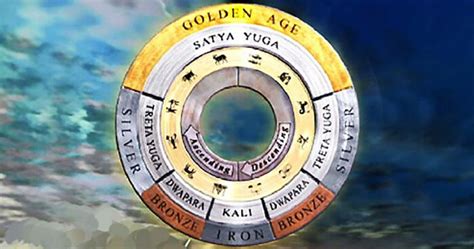The 4 yugas of the Hindu tradition are:
– Golden Age or Krita Yuga of 25,920 years: harmony with the source and with life, goodness, positivity and unity between beings and nature.
– Silver Age or Trêtâ Yuga of 19,440 years: loss of contact with the source, beginning of rituals to compensate, appearance of passions, duties.
– Bronze Age or Dwâpara Yuga of 12,960 years: Beginning of greed, pride, theft, anger. Negativity is taking over the world.
– Iron Age or Kali Yuga of 6,480 years: the last Yuga. The fastest, but also the worst: conflicts, confusion, pollution reach their maximum.
Like a traditional Indian music raga, the beginning is slow and gentle. Then a gradual acceleration takes place throughout the piece, until its final frenetic and supercharged climax. The music stops abruptly, reaching the height of excitement. The final collapse is the work of Shiva, who destroys to create, who tears apart the old to build the new. The final explosion, brutal and violent, is a complete overhaul of the world, which can then be reconstructed in silence and slowness; it is the return of Krita Yuga.
In the Mahabharata, the monkey god Hanuman gives the description of the yuga cycles:
“The Kritayuga had a religion and all men were holy; there was no need to perform a religious ceremony… The men neither sold nor bought; there were no rich or poor; they did not need to work, for everything that men needed was obtained through will… Krita yuga was disease-free, there was no decline with the years; there was no hatred or vanity; no pain or fear. All humanity could achieve the sacred. The universal soul was white…The identification of the Self with the universal soul was the full religion of the perfect age.
In the treta yuga, the sacrifices began, and the soul of the world turned red; virtue fell by a quarter. Humanity began to seek the truth and perform religious ceremonies; they got what they wanted by giving and doing.
In the Dwapara Yuga the aspect of the soul of the world was yellow: religion decreased by half. The veda was divided into 4 parts, some had knowledge of the 4 vedas, others only 3 or 1. The spirit declined, the truth declined; and then came desire and diseases; because these beings suffered punishments. It was an age of decadence through the prevalence of sin.
In Kali Yuga the aspect of the soul of the world was black: it is the age of clashes and death. It’s the conclusion of the cycle before it starts again.”
In relation to this cycle, three gods mainly stand out: Brahma who is associated with creation, Vishnu with preservation, Shiva with destruction.
We would therefore be at the end of Kali Yuga, at the conclusion of this great cycle of human experience. Everything seems to be confirmed by the amplifying and accelerating crises, leading us towards a final cataclysm, the great planetary “reset”, probably in the decades or centuries to come.
The debate that agitates experts on this subject concerns our exact position on this time scale. When will Kali Yuga end? It is true that the Hindu metaphysical tradition seemed to have more ability to calculate and evaluate our exact position in the cycles, through their knowledge of mathematics and astrology.
But the influences of Kali Yuga corrupt their ancestral knowledge, making them incapable of preserving their capacities for temporal calculations. The most popular start date for Kali Yuga is said to be 3102 BC, although there is no precise astronomical or historical basis. Some sources even mention an equal duration for the 4 phases of the cycle, and also ascending and descending phases of consciousness. Debates between academicians, astronomers, astrologers and metaphysicians continue.
But the initiatory aspect of the end of the cycle is more important than its chronology.

